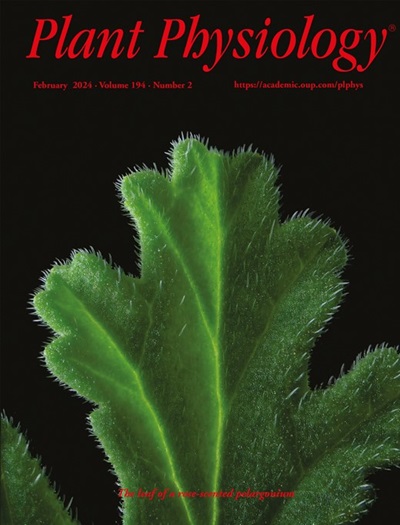An automated root phenotype platform enables nondestructive high-throughput root system architecture dissection in wheat
IF 6.5
1区 生物学
Q1 PLANT SCIENCES
引用次数: 0
Abstract
The root system architecture (RSA) determines plant growth and yield. The characterization of optimal RSA and discovery of genetic loci or candidate genes that control root traits are therefore important research goals. However, the hidden nature of the root system makes it difficult to perform nondestructive, rapid analyses of RSA. In this study, we developed an automated, nondestructive, high-throughput root phenotyping platform (Root-HTP) and a corresponding data processing pipeline for efficient, large-scale characterization of wheat (Triticum aestivum L.) RSA. This system is capable of tracking root growth dynamics and RSA variation across all wheat developmental stages. In situ phenotyping using Root-HTP extracted 47 RSA traits, including 33 novel traits in wheat and 23 novel traits in other crops. We used root trait data from the phenotyping system and yield trait data to conduct a genome-wide association study (GWAS) of 155 wheat accessions, which identified 2,650 SNPs and 233 quantitative trait loci (QTLs) associated with aspects of root architecture. The candidate gene TaMYB93 was detected in a QTL for root tortuosity, and EMS mutants confirmed its effect on RSA in wheat. We explored the relationship between root- and yield-related traits and identified 20 root-related QTLs that were also associated with yield traits. Furthermore, we have built a predictive model for wheat yield based on 18 RSA traits and propose a parsimonious RSA ideotype associated with high yields. The data generated from this study provide insight into the genetic architecture of wheat RSA and support for RSA ideotype-based wheat breeding and yield prediction.一个自动化的根系表型平台,使非破坏性的高通量根系结构解剖小麦
根系结构(RSA)决定了植物的生长和产量。因此,表征最优RSA和发现控制根系性状的遗传位点或候选基因是重要的研究目标。然而,根系统的隐蔽性使得对RSA进行非破坏性的快速分析变得困难。在这项研究中,我们开发了一个自动化、无损、高通量的根系表型平台(root - htp)和相应的数据处理管道,用于高效、大规模地表征小麦(Triticum aestivum L.)的根系表型。RSA。该系统能够跟踪小麦各发育阶段根系生长动态和RSA变化。利用Root-HTP进行原位表型分析,提取了47个RSA性状,其中小麦新性状33个,其他作物新性状23个。利用来自表型系统的根系性状数据和产量性状数据,对155份小麦材料进行了全基因组关联研究(GWAS),鉴定出2650个snp和233个与根系构型相关的数量性状位点(qtl)。在小麦根弯曲QTL中检测到候选基因TaMYB93, EMS突变体证实了其对RSA的影响。我们探索了根系与产量相关性状之间的关系,并鉴定了20个根系相关qtl,这些qtl也与产量性状相关。在此基础上,建立了基于18个RSA性状的小麦产量预测模型,并提出了一个简约的高产RSA理想型。本研究获得的数据为小麦RSA的遗传结构提供了新的思路,并为基于RSA理想型的小麦育种和产量预测提供了支持。
本文章由计算机程序翻译,如有差异,请以英文原文为准。
求助全文
约1分钟内获得全文
求助全文
来源期刊

Plant Physiology
生物-植物科学
CiteScore
12.20
自引率
5.40%
发文量
535
审稿时长
2.3 months
期刊介绍:
Plant Physiology® is a distinguished and highly respected journal with a rich history dating back to its establishment in 1926. It stands as a leading international publication in the field of plant biology, covering a comprehensive range of topics from the molecular and structural aspects of plant life to systems biology and ecophysiology. Recognized as the most highly cited journal in plant sciences, Plant Physiology® is a testament to its commitment to excellence and the dissemination of groundbreaking research.
As the official publication of the American Society of Plant Biologists, Plant Physiology® upholds rigorous peer-review standards, ensuring that the scientific community receives the highest quality research. The journal releases 12 issues annually, providing a steady stream of new findings and insights to its readership.
 求助内容:
求助内容: 应助结果提醒方式:
应助结果提醒方式:


